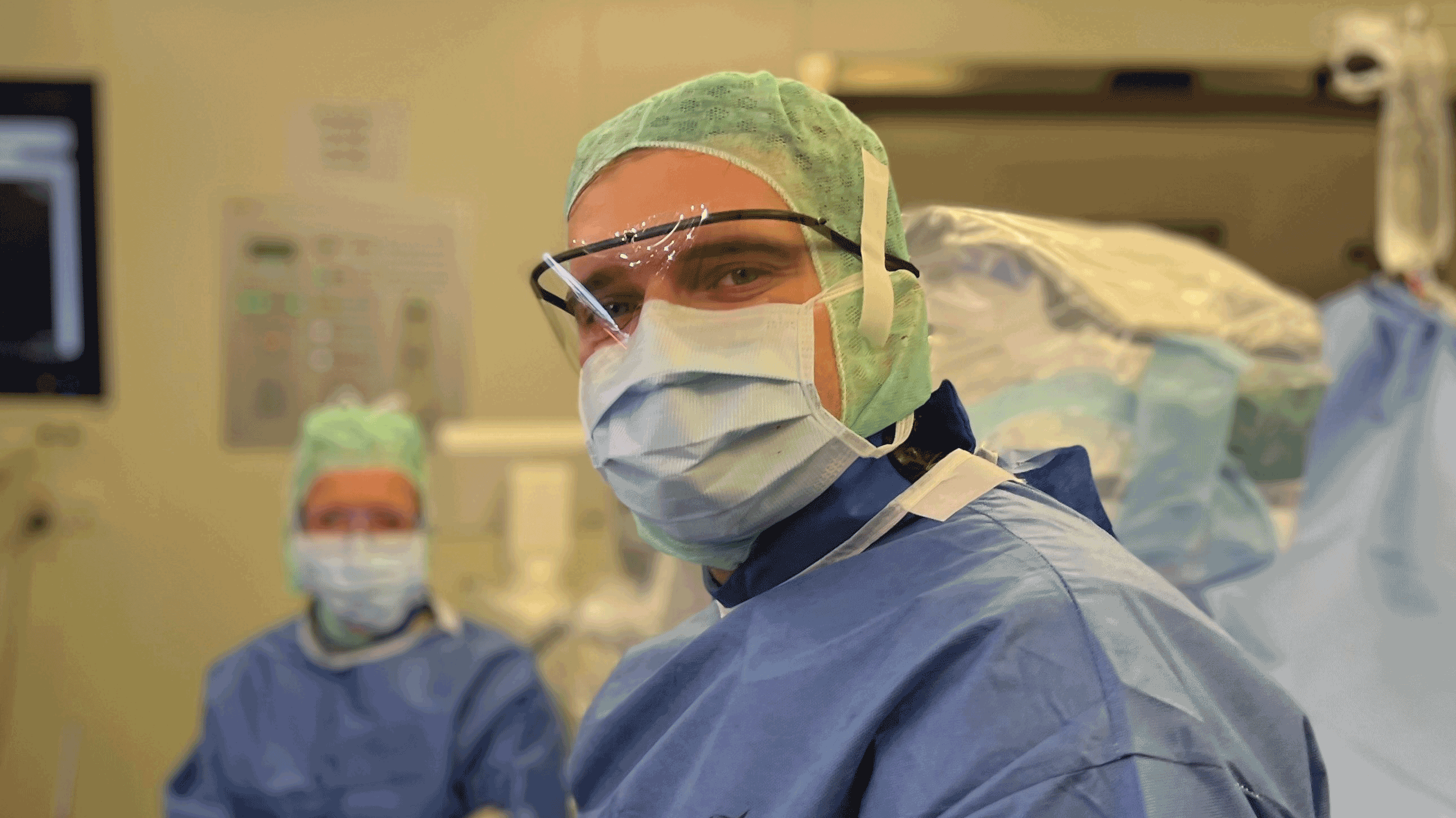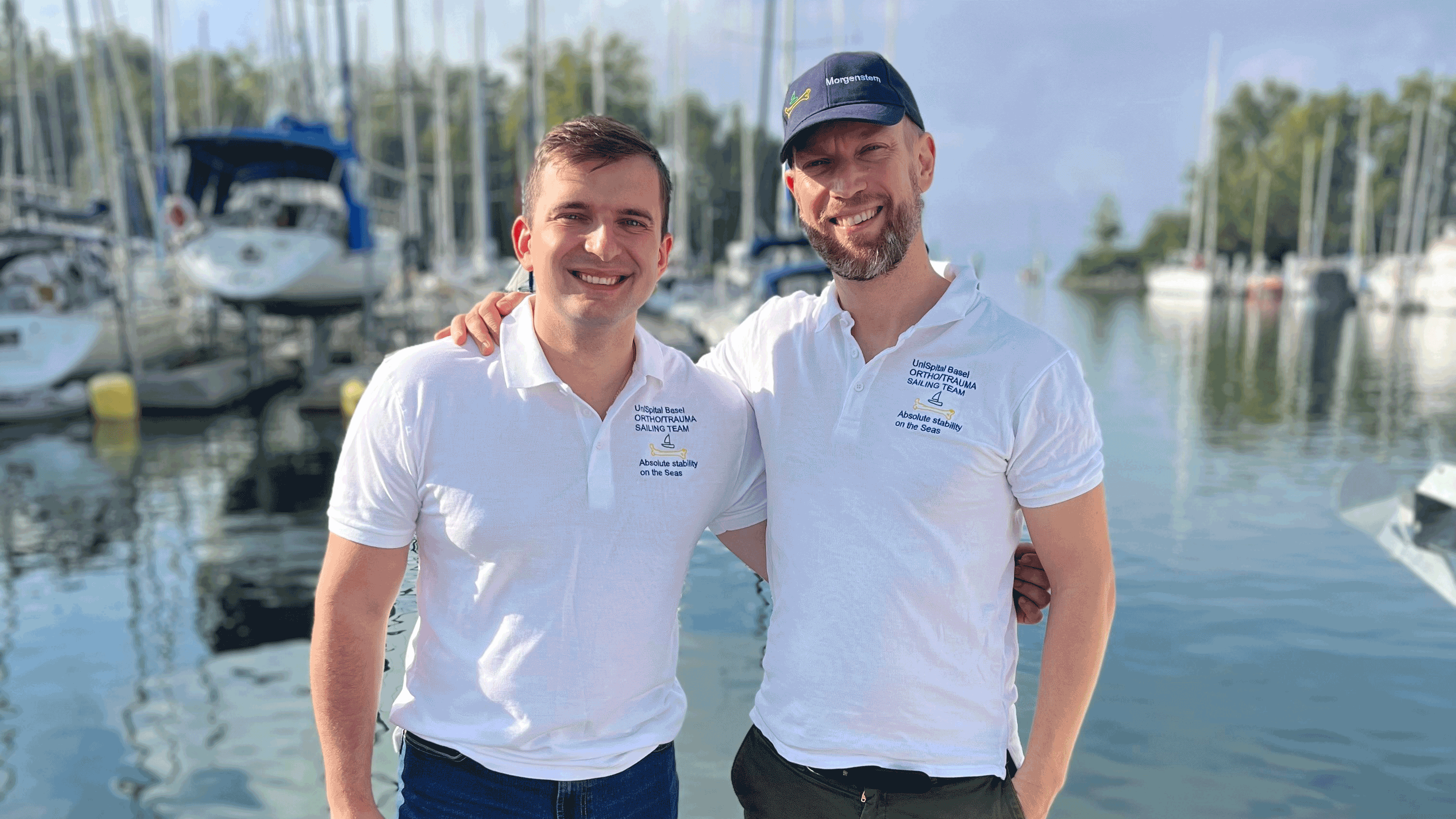AO fellow Vasyl Makhovskyi: Saving lives and limbs

30-year-old Vasyl Makhovskyi, an orthopedic surgeon at Ternopil Regional Hospital in western Ukraine, finally got the chance to embark on his long-awaited AO fellowship at Universitätsspital Basel’s Center for Musculoskeletal Infections in Summer 2023. The route to his fellowship was all but plain sailing, even though it did eventually include a sailing competition.
“I had been waiting for this opportunity for years. The first couple of times, my application was turned down, and when I finally got accepted in early 2020, my fellowship was postponed because of the COVID-19 pandemic.”
Makhovskyi’s interest in musculoskeletal infections had been sparked years earlier when he participated in an AO Trauma basic principles course in Kyiv and later attended a seminar held by Prof Olivier Borens from Lausanne. Olexandr Rikhter, president of AO Trauma Ukraine, then encouraged the young surgeon to try for an AO fellowship. “My chief in Ternopil, Serhiy Hariyan, had introduced me to the AO world and taught me according to the AO principles from the very beginning. I wanted to become an expert in the field of fracture-related infections and waited in anticipation for every new article that was published in this area. An AO fellowship is a unique opportunity to obtain specific knowledge and skills from the world’s most renowned experts in the field.”
When his fellowship finally got the go-ahead after the pandemic, Makhovskyi was facing a new problem. His home country, Ukraine, was being invaded, and the hospital he works at, formerly a civilian tertiary referral trauma center, had been turned into a military hospital treating battlefield injuries. His first reaction was to turn down the fellowship altogether, but the new challenges he was facing changed his mind.
“All of a sudden, we had to tackle injuries we had never seen before. Moreover, we quickly realized the infectious complication rates associated with these injuries were unprecedentedly high, threatening patients’ lives and limbs. It became clear to me that I could not achieve good results without acquiring specific knowledge and skills in musculoskeletal infections management, so I decided to not let this opportunity pass and began my nine-week fellowship in Basel in July 2023.”
To complicate matters even more, Makhovskyi not only had to apply for special permission from the Ukrainian ministry of health to travel abroad—under martial law, all men of conscription age are banned from leaving the country—he also had to leave behind his heavily pregnant wife. “Luckily, my little daughter was very patient and postponed her delivery until daddy was back home.”
Mario Morgenstern, one of Makhovskyi’s supervisors in Basel, is full of praise for the young Ukrainian: “From day one, he was never not there. He was always fully committed and keen to learn as much as he could. Vasyl was always the first one in and the last one out. It was not until his fifth week at the clinic, when we gave him a day pass for the Swiss railway, that he dared to take a day off and explore the country.”


